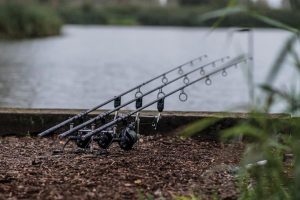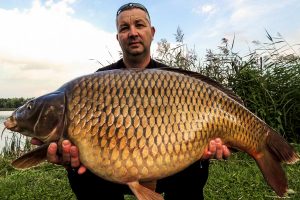Fishing rods have come a long way. Originally, the rods were made from green harts. Later, the fishing rods were made of split canes. Currently, they come in wire loop options and more stable designs like fiberglass. The old fishing rods differ from the present designs in a number of ways. One clear difference is in their weights. The old designs were mostly heavy. Today, most rods are made from simple and light materials, such as graphite and carbon fiber. These are the kind of materials that are used to make rods for carp fishing.
Currently, they come in wire loop options and more stable designs like fiberglass. The old fishing rods differ from the present designs in a number of ways. One clear difference is in their weights. The old designs were mostly heavy. Today, most rods are made from simple and light materials, such as graphite and carbon fiber. These are the kind of materials that are used to make rods for carp fishing.
Choosing the Right Carp Fishing Rods
The current rods for carp fishing range between 10ft and 13ft in length. You’ll need a carp fishing rod that is of the right length so as to catch sizeable fish effortlessly. To get the most out of your fishing rod, it is important that you are comfortable with using it. Therefore, if the rods are too heavy, you should look for lighter alternatives.
Generally, long and heavier carp fishing rods are preferred for long range carp fishing while the shorter and lighter rods are preferred for close carp fishing. For freshwater carp fishing, 12ft rods are recommended. For the weight, a rod with a test curve weight of 2.5-2.7 lbs is ideal.
Another great way of knowing the ideal size or weight of a carp fishing rod is to consult people who are experienced in carp fishing in your local area. Local carp fishing professionals have been doing the activity for long and know what will work for you and what’s not worth your time.
Types of Carp Fishing Rod Actions
When it comes to the performance of the carp rods, the following are most common types of actions:
• Parabolic action: Carp rods with this kind of action are known to bend fully at the tip when under pressure. The rods are suitable for close carp fishing.
• Medium action: These rods bend slightly when stressed, and are thus great for average distance carp fishing—50 -100 meters.
• Through Action: These bend progressively and evenly throughout their lengths, making them powerful shock absorbers when it comes to taking all the fight that big carps have. They are ideal for in close and in-close carp fishing.
• Tip action: The tip of the rods bends flexibly without pressure, and are great for far fishing—over 100 meters.
All you need to conquer the carps on your next carp fishing expedition is a fishing rod of the right size and weight. If you go for a wrong rod, your chances of success will be greatly diminished. Remember that a fishing rod is also the main connection that you have to what’s happening beneath the surface.

